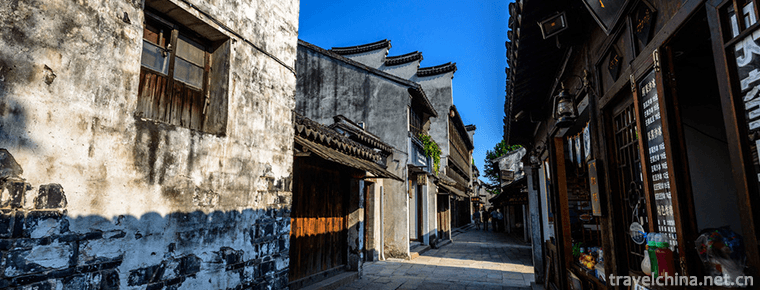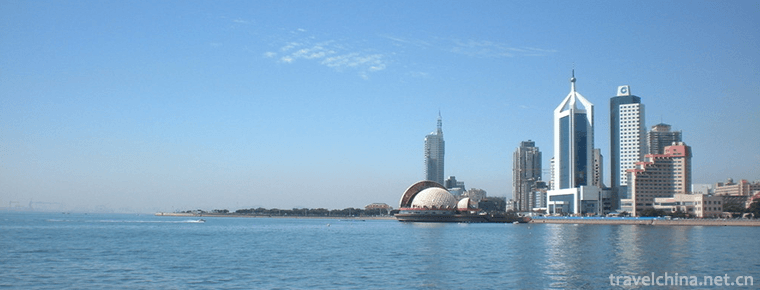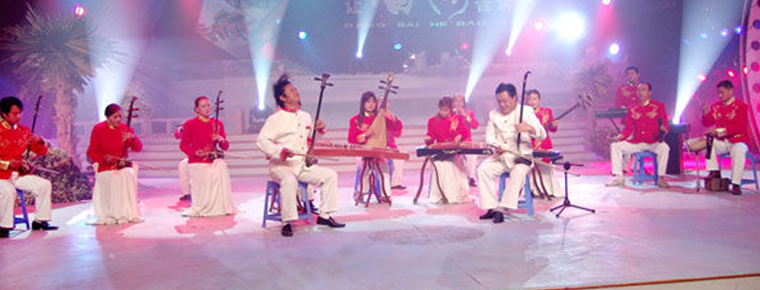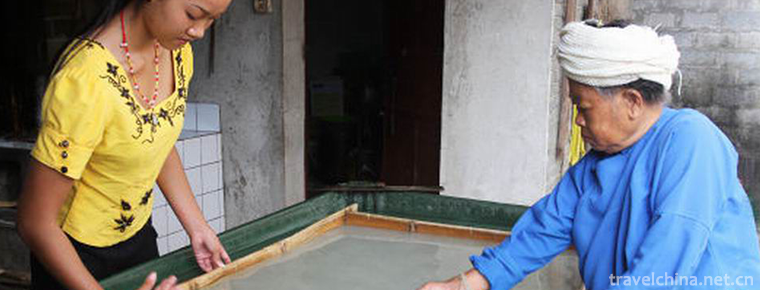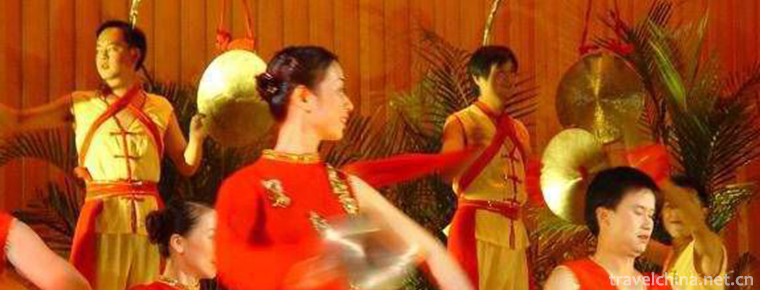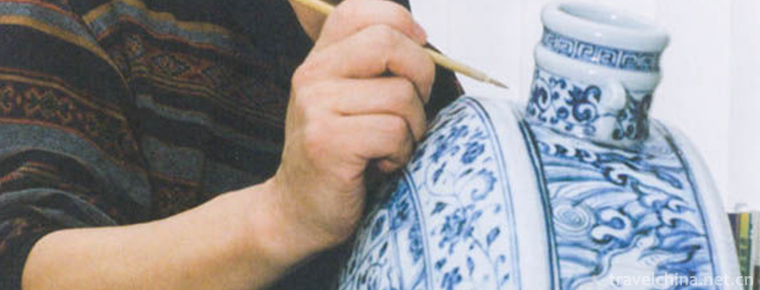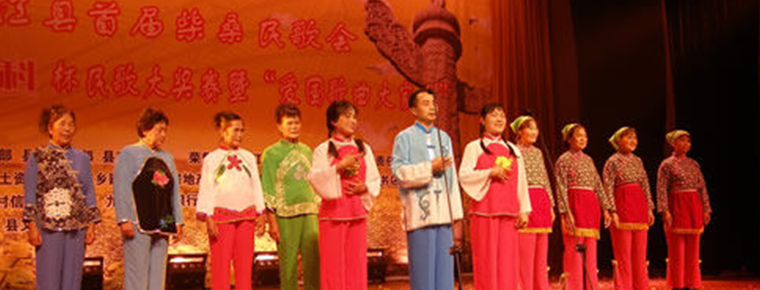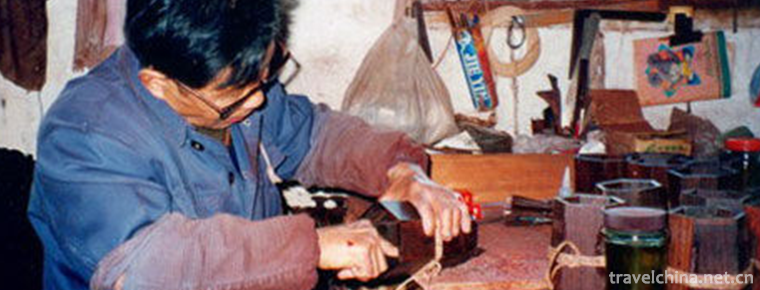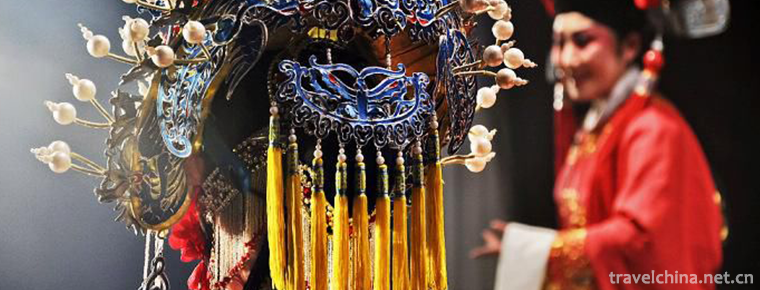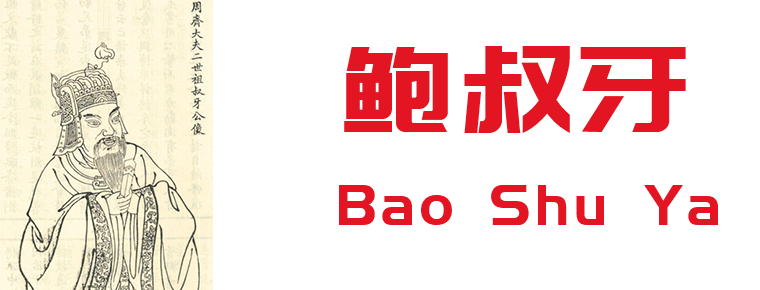Mengfu Mengmiao Scenic Area Meng Temple
Mengfu Mengmiao Scenic Area Meng Temple
Mencius Temple, also known as Yasheng Temple, is located at 44 Yashengfu Street, Zoucheng City, Jining City, Shandong Province, where Mencius, a thinker of the Warring States Period, was sacrificed.
Meng Temple is rectangular, five into the courtyard, 458.5 meters long north and south, 95 meters wide East and west. It covers an area of 436,000 square meters, folded 66 mu. The complex is divided into three roads: east, middle and west. The main building is the sub-sacred temple. The north and South are the central axis, and the left and right are arranged symmetrically. The courtyard-by-courtyard progress, fluctuations, rigorous layout, scattered, magnificent buildings, different courtyards, different patterns, fully reflects the creative ability of the working people and the characteristics of ancient architecture, is the representative works of ancient architecture from Song, Yuan to Ming and Qing Dynasties in China.
According to the Records of Three Movements, Mencius Temple was built in the fourth year of Jingyou in the Northern Song Dynasty (1037), and is located near the tomb of Mencius at the West foot of Siji Mountain in the northeast of the city. Afterwards, Xuan and Sannian of the Northern Song Dynasty (1121) migrated to the site because they were on the verge of being damaged by water. It has been repaired many times in Jin, Yuan, Ming and Qing dynasties, totaling 38 times. The existing buildings were rebuilt after the earthquake in Kangxi period of Qing Dynasty. There are 64 temples in the courtyard, such as the Asian Temple, the Kai Temple, the Meng Mother's Hall and the Zhiyan Hall. Hall 7, 17 meters high, 27 meters wide, 20 meters deep, double eaves, Xieshan style, green glazed tile roof. Under the eaves, there are 26 octagonal stone pillars and symmetrical bedrooms on both sides of the central axis. There are more than 350 stone inscriptions in the temple. The ancient trees in the temple are lush and lush, which can be called a spectacle.
Meng Miao is one of the oldest and most complete ancient buildings in Shandong Province. It is a rare representative works of ancient architecture from Song, Yuan to Ming and Qing Dynasties in China. In 1988, Mencius Temple was declared as a national key cultural relic protection unit by the State Council.
Main attractions
Lattice star gate
The south gate of Mencius Temple is also the first wooden frame structure gate of Mencius Temple. It was built during the reinvention of Mencius Temple in the reign of Kangxi in the Qing Dynasty (1662-1722). Fang Er's regular script "Weixing Gate" has three brilliant gold characters, which are written by Ding Baozhen, governor of Shandong Province in the twelve years of Tongzhi (1873) of the Qing Dynasty. The Book of the Later Han Dynasty contains: "The Star of Antarctica, the Star of Tiantian. To offer sacrifices to heaven and to the stars." Ancient people believed that the "Star" was a star in the sky, "the celebration of the Lord's scholars", and that the Son of Heaven must sacrifice the Star first. The first gate of Mencius Temple is named after the "Weixing", which means that Mencius is a literary star in the sky, and also contains the meaning of respecting the holy as heaven. Xingmen 4 pillars 3 holes, carved beams and painted pillars, brilliant color, heavy eaves and arch, flying in the sky, tall and dignified. In feudal society, the gate of Weixing was opened only on the day when the great ceremony of worship to Mencius was held in February and August of the lunar calendar every year, or when the emperor and the imperial ministers came to visit the temple of Mencius, and it was closed in peacetime to show solemnity and solemnity. Inside the gate, there is a symmetrical wooden Workshop on both sides of the East and west, which is supported by Xieshan corner and Dougong arch. The Eastern name is "Jisheng" and the Western name is "Kailaixue", in order to commend Mencius for his contribution to Confucianism "inheriting the past and opening up the future".
Yasheng Temple Stone Square
Entering the Weixing Gate is the first entrance to the courtyard of Meng Temple. To the north, in the middle of the north wall is a meticulously carved stone square, namely "Yashengfang", which is also the second gate of Mencius Temple. This Shimen Square has four pillars and three gates, eight pillars and eight edges. The top of the Square is decorated with ancient bottles and duoyun, similar to Huabiao. Fang Erzhong inscribes the three characters of "Yasheng Temple". The East lintel lintel lintel lintel lintel lintel lintel lintel lintel lintel lintel lintel lintel lintel lintel lintel lintel lintel lintel lintel lintel lintel lintel lintel lintel lintel lintel Lin On the east side of Shifang is a stone tablet of Zou Guoya Shenggong Temple, which was erected in the Ninth Year of Wanli (1581) in the Ming Dynasty. According to the inscription, this gate was originally the gate of Meng Temple in Ming Dynasty. Its construction date should be nine years before Wanli in Ming Dynasty.
Yimen (Taishan Meteorological Gate)
Through the Yasheng Temple Stone Square, they entered the second courtyard of Mencius Temple. The old cypress in the hospital is pale and the sky is dark. Although it has gone through vicissitudes of life, its branches are still straight and straight. There is a brick road in the courtyard, which leads directly to the "Yimen". This is a high gate building with Xieshan-style bucket arch supporting the three opening doors. There is a plaque hanging on the forehead of the door, and there are five big characters in the book "Mount Tai Meteorological Gate". So Yimen is also called Taishan Meteorological Gate. The four words "Taishan Meteorology" are taken from Cheng Zi's words: "Zhongni Yuanqi, Yan Zi Chunsheng, Mencius and autumn killing all over the time. Zhongni heaven and earth, Yanzi and Feng Qingyun, Mencius Taishan meteorology. This is the name of the gate.
Cheng Sheng men
Crossing the Yimen is the third entrance to the courtyard of Meng Temple. This courtyard has one door in the East and the other in the west, which is the common access to Mencius Temple. Originally known as "Zhong Lingmen" and "Yuxiumen" in Ximen, Dongmen was renamed "Zhiyan Men" and "Yangqi Mencius" in the fourth year of Qianlong reinvention in the Qing Dynasty (1739). They were derived from the seven articles of "Mencius" in which "obscene words know their pioneering work" and "I am good at nourishing my magnificent spirit". On the south side of Zhiyan Gate and Yangqi Gate, there are "sacrificial warehouses" and "provincial livestock houses" respectively. According to Tomorrow's Qisan (1623) Rebuilding the Monument of Mengfuzi Temple, it is stated that "in February of the third year of Tianqi, the sacrificial warehouse and the provincial livestock house will be built in three couplets." These two buildings are dedicated to the storage of sacrificial utensils and sacrifices for Mencius.
There are three parallel gates on the north wall of the courtyard, one is the "Chengsheng Gate", the other is the "Qixian Gate" in the East and the other is the "Respect Gate" in the west. "Cheng
The word "Sheng" takes the meaning of Confucius Tongxu of Mencius'succession to Yao, Shun, Yu, Tang, Wenwu and Zhou Dynasties. "Qixian" means praising Mencius'parents for their contribution to "Qiyu sages".
Ya Sheng Mu Fang
Outside Yangvalves (that is, Ximen), west of the wall of Meng Miaoyuan, there is a wooden workshop across the street on the street of Tongqu in the South and north. The workshop was built in Shun2 years (1458), 4 pillars and 3 holes, Dangabiwa, cornices and cornices, with bright paintings. Half arch under eaves 11 step on 5 warp, a hanging hill type roof in the middle is higher than the Xieshan type roof on both sides, with distinct primary and secondary. Four Xieshan-style corners protrude outwards and rise high. In the middle of the door of the wooden workshop, there are two characters of "Yasheng", hence the name "Yasheng wooden workshop". As early as the Eastern Han Dynasty, Zhao Qi, a native of Changling Mausoleum in Beijing Zhao, called Mencius "the great talent of Assaints in the world", and Wang Chong in the Eastern Han Dynasty praised Mencius as "the talent of Assaints" in Lun Heng. As an official title, "Yasheng" originated in the Yuan Dynasty. From the first year of Yuan Wenzong to Shun Shun (1330), Mencius was presented as "the Saint-Gong of Zou State", and Mencius was first honored as "the Saint-Gong of Zou State" by the feudal dynasty.
Kangxi Imperial Stele Pavilion
On the left side of the gate, there is a tall pavilion with double eaves and warped corners, arch support, green glazed tile roof, gold-painted, magnificent. Inside the pavilion is a monument to the imperial monument of Emperor Kangxi, so it is called the imperial monument Pavilion of Emperor Kangxi. Tablet relief Taishan Xiangyun, Erlong opera beads and other patterns, exquisite sculpture skills, vivid image. The stele is a huge stone sculpture, lion's head, turtle's back, eagle's claws, snake's tail - like turtle, not turtle's monster. In fact, it is not a tortoise. According to Xu Yingqiu's "Yuzhitang Longsheng Jiuzi", this animal is called "hegemony" and "Chao Lai". Legend has it that it is the sixth son of the dragon, who likes to bear heavy loads and has great power. This stone tablet is the largest existing stone tablet in Meng Temple. The inscription is neat and beautiful. It was written by Emperor Xuanye in April, 1687. On the 16th day of the first month of the lunar calendar, the annual temple fair of Mencius Temple is held. On this day, the local people come to the temple to catch up with the fair. People call it "walking all diseases". People not only throw coins into the crevice under the stele, but also touch the head and buttocks of the stone monster with their hands. Said that "sixteen touch turtle head, happy all year round; sixteen touch turtle bamboo, all year round disaster relief is not sick." As a result, the head and buttocks of this monument are getting smoother and smoother. On the east side of the pavilion, there are several stone tablets, such as "Meng Mother Broken Machine Office", "Zi Sizi Makes the Mean", "Meng Mother's Three Movements Temple", "Shu Sheng Zi Sizi Zan" and "Shu Sheng Zi Si Stone Sculpture" by Emperor Qianlong. The stone tablets were originally erected on the left side of the South Gate of the ancient city, in the "Mengmu Broken Machine Hall" and "Zisi Academy", which were destroyed by war before the founding of the People's Republic, and then moved to the Mong Temple for preservation.
Entering Chengshengmen Gate is the fourth entrance courtyard of Mencius Temple, namely the central courtyard. The main building of Mencius Temple, "Yashengdian" is located on the high platform of the courtyard (that is, the terrace). In front of the Yashengdian, there are seven couplets of "Donglu" and "Xilu". In the east of Yongdao, there is a "Qianlong Imperial Stele Pavilion" which is a square building with a single eaves, a dome arch, and a yellow glazed tile roof. In the pavilion, there is a handwritten monument by Emperor Qianlong, "A Saint Mencius Praise Stele".
Tian Zhen well
Under the terrace in front of the Temple of Asia, on the east side of Yongdao, there is an ancient well. According to the inscription beside the well, "In the eleventh year of Emperor Kangxi (1672), when the temple was performing in front of the temple, the sound was thundering in the middle of the sun, and the hearers looked around and lost their color. They saw that there was a round mark of a gourd in front of the steps, and they were familiar with the well." Twelve years were used to build the temple. Sixty-four generations of Sun Meng Shangjinxue." The Shilan by the well was built in the eleventh year of Qingdaoguang (1831). Ge Linxu, a poet of the Qing Dynasty, once wrote a poem entitled Tian Zhenjing:
Ancient Jinglan turned up near the temple, and the sky shocked the rocks and broke the fragrance of water springs.
Draw to repair the original bottomless, the origin of a long line.
Sub Temple
The sub-sacred temple is the main building of Mencius Temple. The palace is 17 meters high, 20.48 meters deep and 27.7 meters wide. It is a green glazed tile roof-covered palace building with double eaves and Xieshan style. The main hall was built in Songxuan and three years (1121), and collapsed in 1668 during the seven years of Kangxi in the Qing Dynasty. The existing hall was rebuilt in 1672 by Kangxi 11 years, and after more than ten times of renovation, it became a magnificent building with golden splendor, painted pillars, carved beams, overhanging eaves, Xieshan corner and Dangabiwa. Around the hall, there are 26 huge stone pillars on the eaves, each of which is octagonal. Under the pillar, stone drums are used as the foundation, while under Peng Xia, stone carvings and lotus cover are used as the underpinning. According to textual research, the stone inscription covered lotus was carved when the temple was built in the Song Dynasty, while the giant stone pillars were carved when the temple was repaired in the Ming Dynasty. The eight stone pillars under the eaves of the front porch of the palace are decorated with shallow reliefs. The pterosaur carved on the south side of the four pillars on both sides of the palace gate soars in the clouds, lifelike and rare in the world. The other faces are carved with precious peony or entangled passionflower. Under the eaves of the palace, Liangfang Dougong are decorated with Yunlong and painted gold pasting technology, which is exquisite! Between the eaves on the front of the hall, a plaque was hanging high. The regular script of the "Asian Temple" was written in gold letters, surrounded by five golden dragons carved with fine carvings. The front of the hall is juxtaposed with Zhu Chang, and a horizontal plaque of "Dao Cheng Nishan" hangs on the forehead of the central door. The palace is supported by eight giant vermilion timber pillars. The front of the two pillars is convex and a pair of giant pillars are connected.
Respecting the king's words will be called Yao and Shun, worrying about the world and caring for Yu Yan.
The door plaques and couplets were written by Emperor Qianlong. In the middle of the hall, in the niche of Carving Dragons and sticking gold, there is a statue of Mencius with nine chapters and nine coronas. The statue of Mencius was destroyed during the Cultural Revolution, and it was rebuilt and restored to the old state in 1986. In the eastern shrine, a statue of Hou Le Zhengzi, a disciple of Mencius, is worshipped. Yue Zhengzi, renamed Yue Zheng, Ming Ke, Shandong people in the Warring States Period, Song Zheng and March 14, 1115, were named as the Honors of the State of Benefit. The imperial edict of feuding the Marquis called for the pleasure of Zhengzi. "Learning the ancient way is good and good, superior to the world, chasing the marquis, its food match is Yan Yan." The light of gentleness never fades away." In 1611, Zou Zhi, compiled by Ling Hu Jixian of Zouxian County in the thirty-ninth year of Wanli in the Ming Dynasty, described Yue Zhengzi, "Mencius used to call him"good man"and"believer". Taste Shilu, recommend Mencius fruitless. When Lu wanted to make it a government, Mencius was so happy that he could not sleep. Entering the temple makes people feel solemn and worshipful. Looking up at the dusty algae well painted by Tuanlong, it is magnificent. Under the algae well, a golden plaque of Emperor Yongzheng's handwriting "Wait First, Wait Later" was suspended.
In addition to commemorating Mencius, the magnificent sub-sacred temple is also an art museum that integrates ancient architecture, sculpture, casting and painting. It has not only the foundation of stone carving covered with lotus pillars when it was founded, but also the shallow line carved stone pillars when it was overhauled in Ming Dynasty, and the wooden frame structure reconstructed during the reign of Kangxi in Qing Dynasty, which can be regarded as a model of ancient architecture. It echoes and complements the Dacheng Hall of the Confucian Temple in Qufu.
Two things.
"Lianglu" is a symmetrical left-right building on the East and west sides of the front of the Asian Temple. It was built in Songxuan and three years (1121). The existing two luxuries were built in the Qing Dynasty. After the founding of the People's Republic, they were repaired many times, and Xilu was overhauled and landed in 1987. Each of them is 7 crowns, 7.8 meters high, 8.35 meters deep and 25.28 meters wide. Lianglu is a place for worshiping Mencius'disciples and scholars who have contributed to the study of Mencius' theory in the past dynasties. Mencius'disciples began to worship in the Song Dynasty and the Five Years (1115). According to the inscription of the Restoration of Juguo Gong Temple written by Sijujing in the first year of Yuanzhen (1295), "In the first year of Yuanzhen, Jujing built a county school for the purpose of establishing a new level for the two camps. Nine out of ten people went down with the ugliness of Gongsun, and the rank of the crown was regarded as worshipful." There are three shrines in each room. There are no statues of wooden gods in the shrines. There are 11 worshippers in the three niches of Donglu in the order of:
Nangong: First Confucian Gaozi.
"Gao Zi, Qi people, too. Learn from Mencius, but not from the countryside. Learn from others. In the Song Dynasty, Sishuibo was the noble, and in the twenty-first year of the Qing and Qianlong Dynasties (1756), he was renamed the Confucian scholar Gao Shi and the Duzi of the sages. Suspected as Chu people. Mencius called him a scholar and said that he had "a good question, a good question and a meaningful distinction with Mencius." In the Song Dynasty, the noble was Pingyin Bo, and in the 21st year of Qianlong (1756), he was renamed Duzi of the sages. Compound surname basin Cheng, name include. Mencius called it "small talent, never heard of the main road, all officials kill". In the Song Dynasty, the title was Laiyang Bo, and in the 21st year of Qianlong (1756), it was renamed Chengshi, the first Confucian basin.
Zhonggong: First Confucian houses were connected.
Full surname Wulu, name company. "Taste Peng Gu's method of writing. After learning from Mencius, he argued with others about the importance of etiquette, food and color, and discussed the communication between Ji Zi and Chu Zi. In the Song Dynasty, fengfubo was the noble, and in the 21st year of Qianlong (1756), it was renamed Lushi, the first Confucian house; it was not harmful for the first Confucian Hao to live. Qi people, "those who concurrently govern Confucianism and Mohism, try to learn from Mencius, but can not completely understand the truth of life". In the Song Dynasty, the noble was named East Abbot, and in the 21st year of Qianlong (1756), he was renamed Haosheng, a former Confucian scholar, and Sun Chou, a sage. Qi people asked about "political talent" and "not moving", and tried to admire Guan Zhong with a view to Mencius. In the Song Dynasty, the noble was Shouguangbo, and in the twenty-first year of the Qianlong reign of the Qing Dynasty (1756), he was renamed the grandson of the sages; Chen Jun, the former Confucian scholar. Qi Ren, Mencius, contains his and Mencius'questions about "resignation, acceptance, acceptance and gift". In the Song Dynasty, the title was Penglaiber, and in the 21st year of Qianlong (1756), it was renamed Chen's first Confucian school, and Qian Tang's first Confucian school. The word is clear, Zhejiang Xiangshan people. In the early Ming Dynasty, he was appointed to the Ministry of Criminal Justice. Zhu Yuanzhang, the Taizu of the Ming Dynasty, was furious because of the phrase in Mencius that "the monarch looked upon his minister as a mustard, and the minister looked upon him as an enemy of the enemy." He said that Mencius should be allowed to share the money. Those who had been admonished said that he was disrespectful and ordered Jin Wu to shoot at him. Qian Tang carried the coffin to the court, resisting alienation and admonishing him, saying, "The minister died for Meng Kai, and there is still glory in his death." Zhu Yuanzhang lamented his sincerity, did not add his crime, and abolished the idea of sharing. Tongzhi 11 years of the Qing Dynasty (1872), attached to the Donglu sacrifice.
Beigong: First Confucian Han Yu.
He Yang (now Mengxian County, Henan Province) is a writer and philosopher of Tang Dynasty. Ideologically, Confucianism is respected and Buddhism is excluded, and Mencius is highly respected. Mencius is said to have "no merit under Yu". In Song Dynasty, he offered sacrifices to the west of the main hall. His nobility was Chang Libo. In 1756, he was renamed the Han family of Confucianism in the 21st year of Qianlong in Qing Dynasty, and his uncle was suspicious of Confucianism. Mencius disciple, Song Dynasty feudal lord for Chengyang Bo, Qing and Qianlong 21 years (1756) renamed the former Confucian uncle; the former Confucian grandson? _________ Boping, Bozhou, Song Dynasty (now northwest of Liaocheng, Shandong Province) is a resident of Laiguan Dragon Pavilion. "Confucianism swept the floor during the Five Seasons Rebellion. Sun Youguang was sacrificed to Meng's ancestral temple. Ancestral hall is the main place, rising in Luzhou.
Three niches in Xilu, nine worshippers.
Nangong: The Confucian Jisun.
Disciples of Mencius. In the Song Dynasty, Fengchengbo was the noble, and in the twenty-first year of Qianlong (1756) in the Qing Dynasty, he was renamed Jisun, the former Confucian, and Taoying, the former Confucian. Disciple of Mencius, "There are questions about Gao Tao's serving as a scholar and Qu Yun's killing people". In the Song Dynasty, Jiaoshui Bo was the noble, and in the 21st year of Qianlong (1756), he was renamed the Tao family of Confucianism, Confucius and Taoism were the first Confucians, with the word "Yuan Lu" and Confucius'forty-fifth generation grandchildren. During the reign of Jingyou in Song Dynasty, Zhiyanzhou Prefecture visited the tomb of Mencius in the sun of Siji Mountain, which was the beginning of offering sacrifices to Mencius. He also visited the descendants of Mencius and recommended them to the court for appointment. In the twenty-first year of Qianlong (1756), the Ministry declared that Confucianism was the first Confucian school, which was under Han Yu of Tang Dynasty.
Zhonggong: First Confucian, Meng Zhongzi.
One said, "Mencius from Kundi, there are things to Mencius to build a dynasty." One is to be a practitioner of Mencius'son. In the Song Dynasty, the noble was the new Taibo, and in the twenty-first year of the Qianlong reign of the Qing Dynasty (1756), he was renamed the Confucian Mong clan. Qi Ren, disciple of Mencius Gaozu. Mencius went to Qi and wrote seven pieces of Mencius. The fifth chapter of Mencius is ten thousand chapters. In the Song Dynasty, the title was Bo Xingbo, and in the twenty-first year of the Qianlong reign of the Qing Dynasty (1756), it was renamed Wanzi, a sage. Now 3 kilometers southwest of Zoucheng, there is a tomb of ten thousand chapters; the first Confucian Chongyu. Disciples of Mencius. There were questions of "wooden beauty" and "no hesitation to ask about color", and consoled Mencius with the words "gentlemen do not complain about heaven, do not judge people". In the Song Dynasty, the title was Chang Lebo, and in the 21st year of Qianlong (1756), it was renamed the first Confucian Chong family.
Beigong: First Ru Peng Geng.
Disciples of Mencius. He once asked Mencius, "Dozens of people ride in the rear, hundreds of followers, in order to pass on food to the princes, not to be peaceful?" Mencius said, "If it is not his way, then a whole crop of food is not acceptable to others; if it is his way, then Shun is under Yao's rule, and does not think Tai - Zi thinks Tai-yu?" In the Song Dynasty, the noble was Rezebo, and in the 21st year of the Qianlong reign of the Qing Dynasty (1756), he was renamed Peng's first Confucian, Xu Pi's first Confucian. Disciples of Mencius. In the Song Dynasty, the feudal lord was Xianyuanbo, and in the 21 years of Qianlong in the Qing Dynasty (1756), he was renamed Xu, the first Confucian, Xianqiu and Meng. The second name is Xianqiu and the first name is Meng. Qi people, disciples of Mencius. "The hermit of Qi. Ask Shun's minister, father and Minister Yao Yu Mencius. In the Song Dynasty, Xuchengbo was a noble, and in the 21st year of Qianlong (1756), he was renamed Xianqiu, a former Confucian.
Existing under the eaves of the Temple of Mencius, there are 20 images of Mencius'porters, arranged in two rows. The stele was inscribed in the third year of Jin Da'an (1211) and in the sixth year of Hongwu in Ming Dynasty (1373). In the Song Dynasty, Yang Xiong, who was the Count of Chengdu, had no name of Tang Dynasty. There is no Yang Xiong in the worship of the two Lus. Yangxiong's sacrifice began in Hongwu, Ming Dynasty (1396). The imperial court upgraded the Qian and Tang Dynasty to Donglu by offering sacrifices to Yangxiong Confucian Temple and Mencius Temple.
Bedroom Hall
The dormitory is adjacent to the Temple of Asia, and there is a high road linking the eaves and terraces behind the Temple of Asia. This hall was built in the first year of the Yuan Dynasty (1295), formerly known as the "Ye Guogong ancestral hall", is a hall dedicated to Mencius'parents. In the ten years of Hongzhi in the Ming Dynasty (1497), when Mencius temple was renovated, it was changed into a "dormitory hall", which became a special temple to worship the wife of Mencius, Tian Shi. Inside the temple, there is a wooden tablet dedicated to the title of "Mrs. Yasheng Tian". It is now a place for exhibiting Mencius'life stories. The bedroom is a five-roof Xieshan-style building, 10.67 meters high, 12.58 meters deep and 21.23 meters wide. On the right side of Yongdao under the terrace in front of the temple is the Emperor's Divine Imperial Tablet, which was inscribed for three years (1316) by Yanyou of the Yuan Dynasty and contrasted with Basiba and Chinese in praise of Mencius'parents. There are three ancient birch trees on the terrace and Yongdao. They were planted during Xuanhe reign of the Northern Song Dynasty. It has been 900 years since then. They are still green and thriving.
The sacred hall
Formerly known as "Ye Guogong Dian". In order to worship Mencius'father Qisheng Ye Guogong's palace, so the name. Located on the East Road of the fourth entrance to the courtyard of Mencius Temple, inside the gate of Qixian, on the left side of the Asian Temple. The hall is a five-roof building with a single eaves and hills. The hall is 9.97 meters high, 12.40 meters wide in East and west, and 10.60 meters deep in North and south. Mencius'father's name is fierce and his words are fair. In the shrine in the center of the palace, a statue of Mencius'father with seven chapters and seven crowns was placed, like the regular script "Kaisheng Duke of Ye" on the front wooden tablet. The niches and statues in the temple were destroyed during the Cultural Revolution and were restored in 1986.
Meng Mu Dian
Located behind the Temple of Enlightenment, there are tall buildings connected with Yongdao, a hall dedicated to Mencius'mother. The Hall was originally named "Xuanxian Lady Hall", and later changed to Meng Mother's Hall. The hall is 7.80 meters high, 10.98 meters wide in East and west, and 9.53 meters deep in North and south. There is no statue in the hall. A wooden main tablet is placed in the central shrine. The regular script on the tablet is "Madame Zou Guoduan Fan Xuan Xian". There is a shrine on the East wall. Inside, Mencius'three-dimensional stone carvings look like one. According to the records of Jiuxian County, this is what Confucius got when he repaired Mencius'mother's tomb in Jingyou's reign in Song Dynasty. It was named "Mencius carved his mother's funeral stone statue". On the west side of the palace is a monument dedicated to the 14th year of Qianlong in the Qing Dynasty (1749). Later generations praised Meng Mu's "Three Movements" religion, which is in a state of awe. The saint of the son is the saint of the mother. "Han Shi Wai Zhuan" contains: "For Mencius'words, the world is a model for aunts, but the only mother has been taught. As early as the Tang Dynasty, Mother Meng established a special ancestral hall for the year of sacrifice. In the Song Dynasty, she was named "Mrs. Yan Guoxuan", in the third year of Qianlong (1738), and "Mrs. Fan Xuan Xian of Zou Guoduan" in the Qing Dynasty.
Yan Tang
Located on the west side of the Ya Sheng Temple, the West Road of the fourth entrance courtyard of Meng Temple. Crossing the salute gate, there is a square aisle courtyard. In the north, there is a gate called "Ramadan Gate", which is a quiet and beautiful courtyard. Inside and outside the courtyard, there are more than 50 inscriptions on the walls. Most of them are poems and inscriptions left by famous scholars who visited Meng Temple in Jin Dynasty. On both sides of the eastern and western sides of the fasting gate, two giant Ancient Ginkgo trees, one male and one female, stand tall and shade the entire courtyard. On the West side, there is an old Wisteria twisting like a dragon, winding the trunk of Ginkgo biloba, reaching to the top of the tree, which is one of the wonders of Meng Temple. Every early summer, a bunch of grape-like Wisteria blossoms blossom, emitting an attractive fragrance.
The three couplets of Jiantang in the north of the courtyard are Zhiyan Tang. The idea is to "offer sacrifices with severity", that is, to be serious and sincere. The hall was built in 1332, three years from Yuan to Shun. In the hall hangs a plaque with three characters "Zhiyantang" written by Mencius, the 73rd generation of Mencius, in the third year of Xuantong reign of the Qing Dynasty (1911). The original name of this hall is "Zhaixue", which is a place for bathing, changing clothes and fasting before worship by descendants of Mencius.
The main hall
Located on the west side of the Asian Temple, after the Righteous Hall. There is a small gate on the west side of the Temple, named Yilu, which leads to the ancestral temple of Zou. The ancestral temple of Zou is Meng's family temple, or rather the temple of Meng's distant ancestors. Founded in the Decade of Qingdaoguang (1830). The ancestral hall is a three-roofed tree, 7.45 meters high, 10.06 meters wide in East and west, 8 meters deep in North and south. In the temple, the main wooden deity tablet of the Mong family from the fifth generation to the second ancestor is placed. In ancient times, Doctor Qing built a temple to worship Tai Gaozu for the next five generations, and then moved to his master. Mencius is the ancestor of Mencius. On the east side of the Hall of Mengfu, there is a "Five Dynasties Temple", which worships the fifth emperor of the emperor, and then moves the emperor above the Taigao ancestor, far from the ancestor, Zhaomu Ranran. A plaque was hanging in the middle of the ancestral gate, and the seven words "Mong's Grand Majesty Temple" were written.
Burning silks
Located in an independent courtyard behind the Zou Temple, on the west side of Meng Temple's bedroom. The courtyard opens a small gate to the East in the southeast and connects with the Astral Temple. In the middle of the courtyard, there is a square wall with the door facing south. In the middle of the courtyard, there is a brick terrace with abutments to the north. On the platform, there is a stone-carved rectangular pond, with the letters "silk-burning pond" engraved on the front. Meng's descendants burn sacrifices here every time they sacrifice their ancestors.
Meng Miao ancient trees
The ancient trees of Meng Temple are a great wonder of Meng Temple. There are more than 430 trees in the temple, mostly ancient pine and cypress, with ginkgo, acacia, wisteria and other ornaments. These trees, evergreen in winter and summer, have unique shapes, such as dragons, animals such as phoenix, strange and different postures. Among them are the birch trees planted during the construction of the temple in Song Xuanhe. They have a history of nearly 900 years. Although they have been destroyed by storms, thunders and fires, they are still upright and lush. Looking at these strange and magnificent ancient pine birches, in this solemn environment, enjoying the beauty of these ancient trees, faithful and independent spirit, it is easy to associate Mencius said that "wealth can not be lewd, poverty can not be moved, majesty can not be surrendered" of the centuries-old saying, let people imagine, linger and forget. And the flying birds that inhabit ancient trees are also a scene of Meng Temple. In the ancient Musenwei Temple of Meng, all kinds of birds flock here. Grey cranes are in the majority, thousands of them. Every summer, visiting the temple of Meng, watching ancient trees and cranes, listening to the roar of Songtao, smelling the fragrance of plain face, is really relaxing and delightful. Especially the ancient cypress, vine, ginkgo biloba, Chinese wolfberry in Huaiyu, Donghuai look at the moon, known as the "four wonders of ancient trees" of Meng Temple.
Sophora japonica
Outside the gate of Zhiyan, there are 45 cypress birches planted. They are arranged along the north and south of the East Temple wall. They stand tall and magnificent. One of the southernmost plants is the rare "cypress pagoda" in the world. The diameter of the trunk is 4.6 meters, the height is 13.8 meters, and the diameter of the crown is 12.3 meters. Among the old Oriental arbor trunks that can be embraced by three people, a giant locust (Sophora japonica) emerges from the root in the center of the tree trunk. The two trunks are united. Although the branches and leaves are crisscrossed, the cypress is rebellious and lush. According to the textual research of domestic plant experts, this ancient cypress-bearing Sophora tree was planted in the Yuan Dynasty. It has been more than 700 years. It is a rare bi-tree parasitic peculiar landscape in China. Some people describe "Bai Bao Huai" as "husband and wife tree". It has the symbolic meaning of deep love to see its intertwined, interdependent, embracing each other and never separating form.
Gingko Ginkgo
Inside the fasting gate of Meng Temple, on the East and west sides of the front of Zhiyan Hall, two ancient giant ginkgo trees, male and female, stand tall and shade the whole courtyard. According to textual research, the two trees were planted in the Yuan Dynasty and have been planted for more than 700 years. Under the right Ginkgo biloba tree, there is a 100-year-old Wisteria with a thick stem and a diameter of about 40 centimeters. It twists and turns around the trunk of Ginkgo biloba and stretches to the top of the tree, just like a dragon, fluctuates and rises in the air. Every spring, rattan blossoms, such as purple jade string, are not interesting. In the early winter season, there are many ginkgo bilobas, and the fan-shaped leaves are beige, which make the courtyard simple and elegant. It is also one of the wonders of Meng Temple.
Chinese wolfberry
There are three ancient birches on the front terrace and Yongdao of Meng Temple. According to the Records of Three Movements, it has been planted in Xuanhe of the Northern Song Dynasty for nearly 900 years. It is one of the oldest trees in Meng Temple. It is still green and lush. Wonderful is one of the ancient birch, not only the top branch shape of the tree is "deer turning back" (Linmo Hanyu), quite strange, but also parasitized several Lycium barbarum in the bird hole above the tree trunk, with luxuriant branches and leaves. In summer and autumn, the green leaves of Lycium barbarum are surrounded by red fruits, swaying in the wind, interesting and pleasant.
Clove moon
On the wall of Xiyuan, which is located on the west side of Meng Miao's dormitory, is an ancient Chinese locust. The diameter of the original tree trunk is more than 6 meters. Now the trunk is rotten, and new trunks grow on the bark of the ancient locust tree, which is tall and luxuriant. The hollow trunk forms a round hole about 1 meter in diameter. At night, the bright moon emerges from the hole. It is called "the moon in the cave". It is quite ancient, elegant and interesting. It is also a scene of Meng Temple. According to textual research, this locust tree was first planted in the Tang Dynasty, when it was longer than the history of Mencius Temple.
Mencius Temple has always been praised for its magnificent ancient trees. Dong Qichang, a great painter and calligrapher in the Ming Dynasty, praised in his poem titled "An Ancient Birch in Mencius Temple": "Love this temple tree of Mencius, see the penalty of pawning. Wagensoo is moist and full of gas. Reading the world and grinding the Qin Dynasty, the sky is high and Lu Qing is green. Fang Zhiqiao sanshou, only listed in the Immortal Sutra. These various ancient and famous trees not only add splendid color to the magnificent and magnificent temple of Meng, but also add a sense of historical gravity to the ancient temple of Meng.





-
Nanxun ancient town Scenic Area
Nanxun Ancient Town is located in Nanxun District of Huzhou City, at the junction of Jiangsu, Zhejiang and Shanghai provinces. .
Views: 221 Time 2018-12-07 -
Qingdao Seaside Scenic Spot
Qingdao Seaside Scenic Spot is the first batch of state-level scenic spots announced by the State Council in 1982, and also the first batch of national AAAA-level scenic spots..
Views: 234 Time 2019-02-07 -
Major tune
The major tune was originally called "drum tune". Varieties of Quyiqu. It was first prevalent in Kaifeng, Henan Province, and then spread to Luoyang, Nanyang and other places..
Views: 361 Time 2019-04-23 -
Handmade Paper Making Skills of Dai and Naxi Nationalities
Dai and Naxi hand-made paper-making skills, Yunnan Lincang City, Shangri-la County, local traditional handicraft, one of the national intangible cultural heritage..
Views: 127 Time 2019-04-24 -
Hill hinge
Originated in Xixing and Longgang of Pingchang County, northeastern Sichuan Province, it is a traditional folk dance that spreads in Dazhou, Bazhong and some counties (cities and districts) under the .
Views: 316 Time 2019-04-29 -
Restoration Techniques of Ancient Ceramics
Ancient ceramic restoration technology is a special artistic creation of comprehensive modeling, sculpture, color, calligraphy, painting, chemical industry, etc. Ancient Ceramics Restoration must be c.
Views: 689 Time 2019-05-01 -
Jiujiang folk songs
Jiujiang folk song is a traditional folk song that is popular in the surrounding areas of Chengmen, Ma Huiling, Huanglao Men, Lion and Chengzi Town in Jiangzhou District, Jiujiang City.
Views: 185 Time 2019-05-08 -
Production Techniques of National Musical Instruments
The production of national musical instruments in Suzhou is one of the local traditional handicraft techniques in Jiangsu Province. With a long history, a wide range of varieties, exquisite skills and.
Views: 445 Time 2019-06-05 -
Yanbei Playing with Children
Yanbei children's play, also known as cough cavity, is popular in Datong City, Shanxi Province and its surrounding traditional drama, one of the national intangible cultural heritage..
Views: 150 Time 2019-07-10 -
Bao Shu Ya
Bao Shuya (the first 723 years or the first 716 years - the first 644 years). Si Surname, abalone His name is a famous uncle. Yingshang (now belongs to Anhui (person) the Spring and Autumn period Qi S.
Views: 168 Time 2019-09-11 -
China University of Mining and Technology
China University of Mining and Technology (China University of Mining and Technology), referred to as China Mining University, is located in Jiangsu province. Xuzhou City Yes.
Views: 166 Time 2019-12-19 -
Modern cheongsam
At the beginning of the 20th century, it was popular to wear a short jacket with trumpet shaped wide sleeves inside, and a long waistcoat without sleeves with the front and back of the coat reaching the ground. Since then, cheongsam has made some changes in the edge, sleeve.
Views: 117 Time 2020-12-11
